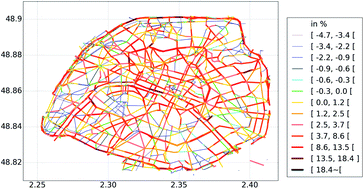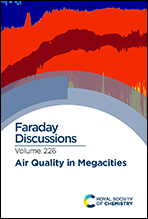Simulation of primary and secondary particles in the streets of Paris using MUNICH
Abstract
High particle concentrations are observed in the streets. Regional-scale chemistry-transport models are not able to reproduce these high concentrations, because their spatial resolution is not fine enough. Local-scale models are usually employed to simulate the high concentrations in street networks, but they often adopt substantial simplifications to determine background concentrations and use simplified chemistry. This study presents the new version of the local-scale Model of Urban Network of Intersecting Canyons and Highways (MUNICH) that integrates background concentrations simulated by the regional-scale chemistry-transport model Polair3D, and uses the same complex chemistry module as Polair3D, SSH-aerosol, to represent secondary aerosol formation. Gas and aerosol concentrations in Paris streets are simulated with MUNICH, considering a street-network with more than 3800 street segments, between 3 May and 30 June. Comparisons with PM10 and PM2.5 measurements at several locations of Paris show that the high PM10 and PM2.5 concentrations are well represented. Furthermore, the simulated chemical composition of fine particles corresponds well to a yearly measured composition. To understand the influence of the secondary pollutant formation, several sensitivity simulations are conducted. Simulations with and without gas-phase chemistry show that the influence of gas-phase chemistry on the formation of NO2 is large (37% on average over May and across all modelled streets), but the influence on condensables is lower (less than 2% to 3% on average at noon for inorganics and organics), but may reach more than 20% depending on the street. The assumption used to compute gas/particle mass transfer by condensation/evaporation is important for inorganic and organic compounds of particles, as using the thermodynamic equilibrium assumption leads to an overestimation of the organic concentrations by 4.7% on average (up to 31% at noon depending on the streets). Ammonia emissions from traffic lead to an increase in inorganic concentrations by 3% on average, reaching 26% depending on the street segments. Not taking into account gas-phase chemistry and aerosol dynamics in the modelling leads to an underestimation of organic concentrations by about 11% on average over the streets and time, but this underestimation may reach 51% depending on the streets and the time of the day.

- This article is part of the themed collection: Air quality in megacities


 Please wait while we load your content...
Please wait while we load your content...